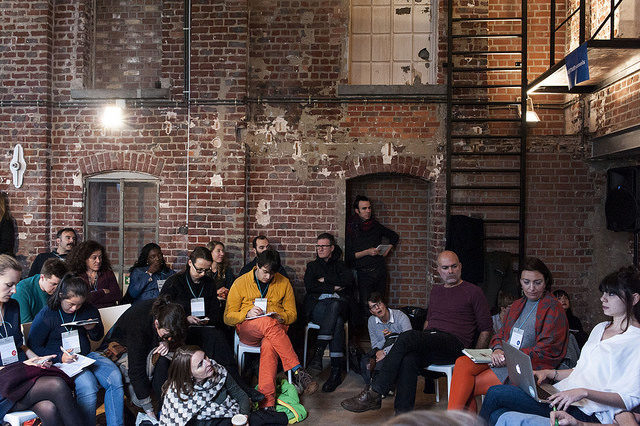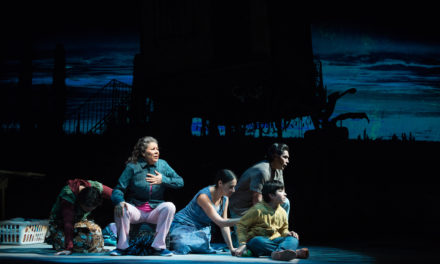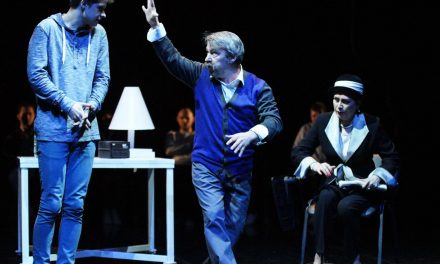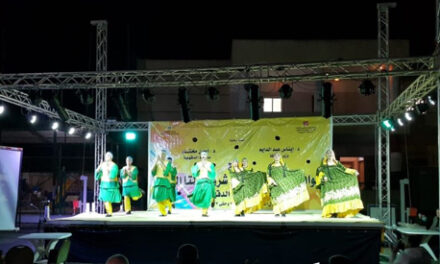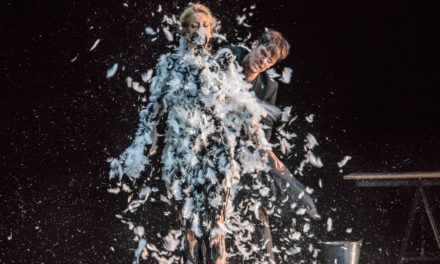In the session City Of Arrival, and with the case of Brussels as a starting point, the new nature of our European cities was discussed. From “multicultural” to “superdiverse“–with a majority of the population having roots in migration–our cities have changed and this change should be reflected in all aspects of societies. In a heated debate, the role of arts organizations in reflecting this new reality was questioned. How to be on the forefront of change rather than lagging beyond?
Dr. Dirk Geldof, a professor at the University of Antwerp and author of the book Superdiversity In The Heart Of Europe published in English in 2016, introduced the discussion with a rich insight into the transformations of our European urban realities.
The concept of “Superdiversity” has been used for the first time in 2007 by Steven Vertovec to describe London. “Superdiversity,” according to this theory, goes beyond the concept of the “multicultural city” which is not relevant anymore, and has three key dimensions.
It first reflects a quantitative transition. European cities have become arrival cities. This has changed our urban environments profoundly as a majority of the population now have roots in migration. If this transition already happened years ago for cities such as New York, Toronto, or Sydney; this has happened more recently in Europe. The first European city to have become a “superdiversity city”–or a “minority majority city” as they are also called–has been Brussels in 2001. 70% of the population of the region of Brussels today has roots in migration. In Molenbeek, the neighborhood that hosted the meeting, 85% to 90% of the population immigrated themselves or have parents who immigrated. It is expected that most of the main European cities will become superdiverse in the next 10 years.
“Superdiversity” also translates a qualitative transition in the types of immigrants settling in our European cities. If before immigration flows connected a limited number of countries of origin to a limited number of countries of destination (mostly for historical reasons linked to colonial ties or agreements between countries on workforce migrations), today flows are a lot more diverse and complex. Because of globalization and the successive enlargement waves of the European Union, today all the EU member states receive immigrants coming from a variety of countries from across the world. In Belgium, for example, the Italians and Moroccans have lost their monopoly. There is, therefore, an increasing diversity within diversity itself. Brussels today counts more than 170 different nationalities and more than 100 languages. Immigrants represent a great variety of cultures, religions, and social economic backgrounds. Thanks to the internet and mobile technologies, they also keep strong ties with their countries of origins, a lot more easily than in the past.
Superdiverse cities finally know slow and often contested processes of normalization of diversity. If for many inhabitants daily contexts of diversity have become the norm; some settings remain as white as they were in the past, and this also includes cultural institutions such as museums or theatres.
For Dirk Geldof, to address this imbalance, it is necessary to move beyond the “us-and-them” paradigm that is still often used by “white organizations” in superdiverse contexts. Today and tomorrow, as more and more professions will have to work in superdiverse contexts (professors, police officers, doctors, arts workers, etc.) appropriate competences will have to be acquired. This sensitivity and awareness to superdiversity will also have to be put at the heart of organizations, and not be the responsibility of only one or a few colleagues within an organization.
To acknowledge and reflect superdiverse societies, we will also have to move beyond ethnocentrism–a traditionally white and upper-middle-class perspective–and beyond essentialist visions of cultures (“the” Moroccan culture, “the” French culture, etc.)
If in a first phase more attention will have to be given to ethnic differences to break the “all white” nature of many environments, including the arts, a second phase will ask for a more nuanced understanding of identities as illustrated by the “intersectionality” theory, also taking into account differences in age, sex, education levels, etc.
Following this introduction, Hooman Sharifi, Artistic Director & CEO of Carte Blanche, the Norwegian National Company of Contemporary Dance, who arrived in Norway from Iran at the age of 14, gave his perspective on the role of the arts in dealing with increasingly diverse European societies.
He first underlined the importance of understanding the great diversity of reasons that led an individual to immigrate, and then questioned the specific role of “national cultural institutions” in working on those issues. Carte Blanche pays great attention to the diversity of backgrounds and esthetics of its dancers and the choreographers it works with. It has also established partnerships with dedicated government departments working with refugees. But where does the role of the arts end? How can an art institution offer something valuable to immigrants when the primary concern of this population is to establish itself in the country and find a way to survive?
For Hooman Sharifi, arts can offer a place where an immigrant suddenly “becomes a person”–beyond her or his refugee status. Art is given sense at the moment it meets its audience, so to build a complex art, you need a complex audience; an audience that reflects the diversity of society. To fulfill their role, arts institution should also work on becoming part of the everyday routine of the immigrant population.
Finally, Hooman Sharifi underlined the importance of making sure “white people” do no start feeling excluded; a feeling of exclusion that could lead to dangerous political situations which the election of Donald Trump in the US illustrates. We have to be conscious that some people are afraid of the transition we are experiencing and we have to take that feeling into account. What can art do to mitigate this?
Saidou Ly, a painter and poet from Mauritania who arrived in Belgium in 2011 spoke of his experience with Globe Aroma, an open Art House where refugees, immigrants, Brussels inhabitants, and individuals active in the inclusion and cultural sectors meet. The ultimate objective of Globe Aroma is not necessarily to facilitate inclusion but first and foremost to encourage encounters and the sharing of experiences. For Saidou Ly and for globe Aroma, indeed, inclusion is a two-way process that cannot be imposed on an individual.
Inspired by those testimonies an intense discussion followed, addressing many of the sensitive issues relating to the behavior, position, and role of the arts sector in “superdiverse” societies.
As board and staff of arts organizations remain in a large majority “white,” what should be the way forward? As claiming that competent diverse profiles do not exist is not an acceptable excuse anymore, should other incentives be used? Should public funding be conditioned to more proactive actions promoting diversity? Or should strategies be more long-term and “pedagogical” such as the initiatives taken by the Flanders Arts Institute (coaching trajectories for organizations towards more diversity)?
Should people seen as clinging to their privileges be forced to leave? Or could those people just be asked to step aside leaving more space to others?
When trying to correct imbalances, sometimes using radical tools, shouldn’t we also keep in mind the long-term repercussions of our actions? Through such initiatives, do we feed understanding or resentment? Rather than asking some people to leave to make room for others, can we find a way to “share?” What do we have to gain by collaborating?
Do organizations not acknowledging the need to fully integrate diversity run the risk of being sidelined and replaced by a new generation of actors? In this scenario, could “young organizations” find the resources to survive in the transition period?
To fully understand the gap between the realities of our societies and the state of play in the arts sector, we have to always remember the history of colonialism (“We are here cause you were there”) and we also have to be aware of our “unconscious bias” (“We do not see things as they are, we see things as we are.”)
At a more political level, we have to be ready to look at all the implications of the positioning of our European societies towards migrants (imbalance in the value given to individual lives, violations of basic human rights in the very heart of our cities, etc.) even if this might feel sometimes very uncomfortable. Facing those kinds of situations, when do you act as a political activist, as a human being, as an artist? Does the discourse on the arts also need to be revisited; not lowering the level of exigency but completely blowing up the reference framework?
Towards the end of the session, discussions moved towards concrete actions that could be taken to challenge and finally shake the “status quo” that has been going on for too long in the European arts sector. Examples were given of initiatives taken by cultural institutions or arm-length bodies to enhance diversity (targeted support to underrepresented groups, collaborations with other public institutions/organizations working with migrants, drastic review of the artistic offer in a “diversity” perspective, etc.)
If actions can and should be taken, big and small, from all corners and at all levels of our organizations and institutions, the arts sector–as all other sectors of our European societies–still needs to fully acknowledge and integrate the fact that we are, or will soon be, living in superdiverse “minority majority cities.” This session was surely an important step in the right direction, acknowledging the importance of the changes that will still need to be implemented in the future, and not shying away from the uncomfortable discussions.
This content was originally published by Daphne Tepper, “City Of Arrival. Report From The IETM Brussels Plenary Meeting, 23 – 26 November 2017,” IETM, Brussels, November 2017. Reposted with permission.
This post was written by the author in their personal capacity.The opinions expressed in this article are the author’s own and do not reflect the view of The Theatre Times, their staff or collaborators.
This post was written by Daphne Tepper.
The views expressed here belong to the author and do not necessarily reflect our views and opinions.

